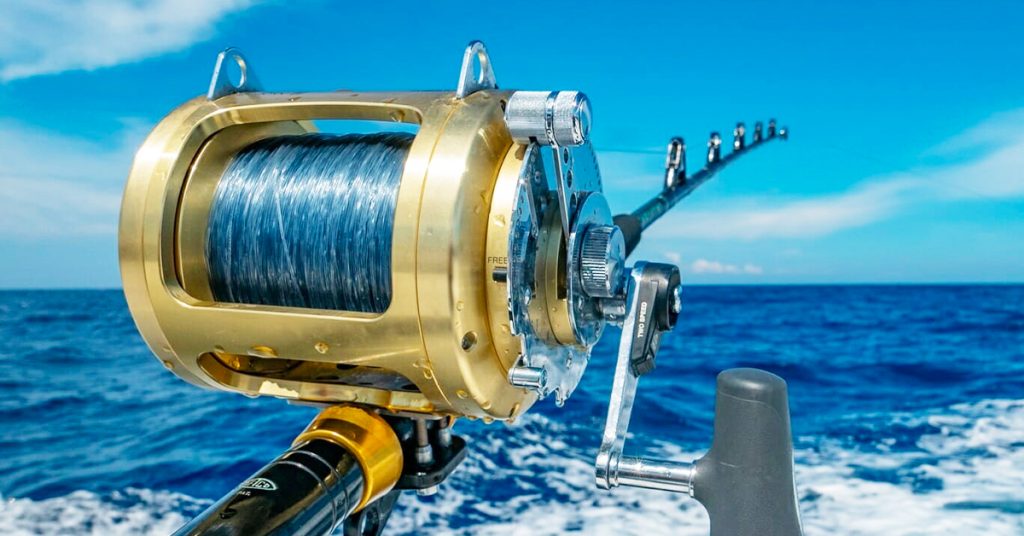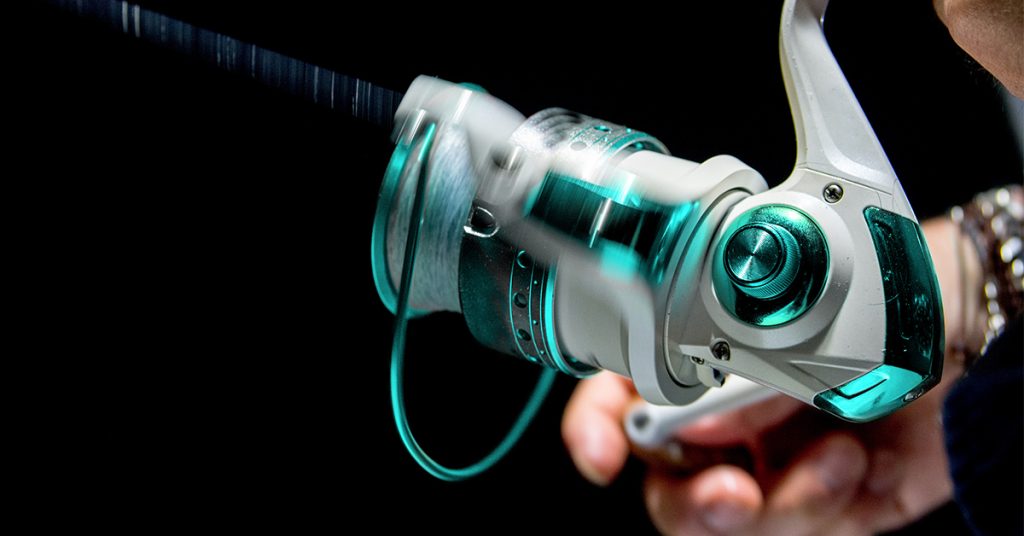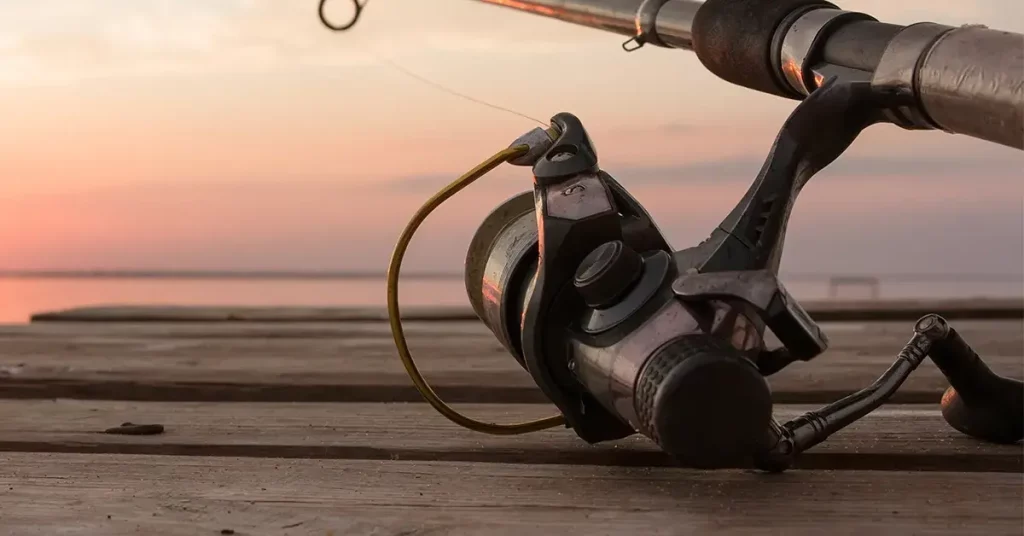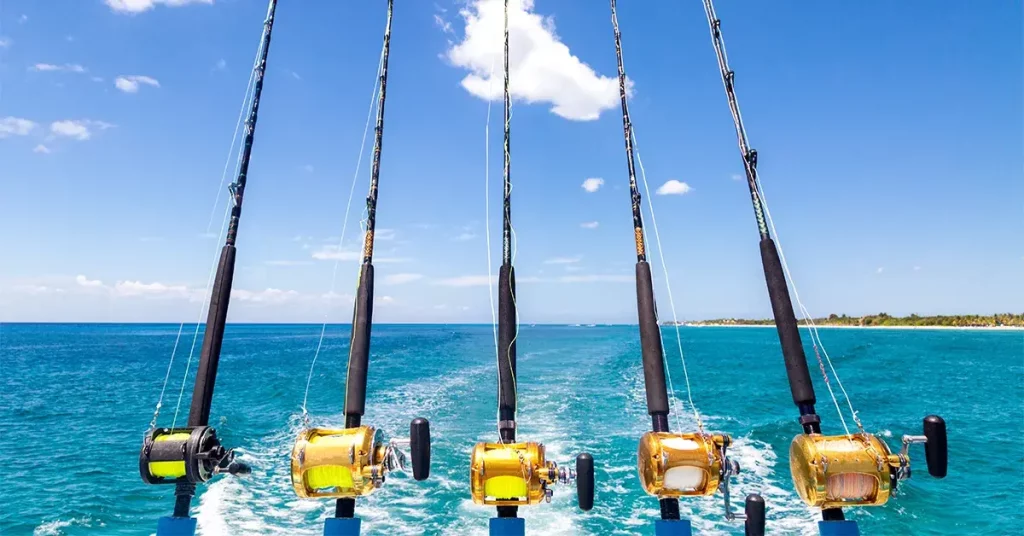If you’re new to fishing you might be curious about fishing line strength rating. In fact, one of the first questions many beginner anglers ask is “What pound fishing line should I use?”
While it might seem like a fairly straightforward question, the answer isn’t always black and white. There are a number of different factors that impact the ideal fishing line strength for a given situation.
Personal preference, target species, water conditions, and line material all have a major influence on the right pound fishing line for the situation. Let’s take a look at some of these factors in greater detail, so you’ll have a better understanding of fishing line strength rating and how to select the right line test.
Line Strength
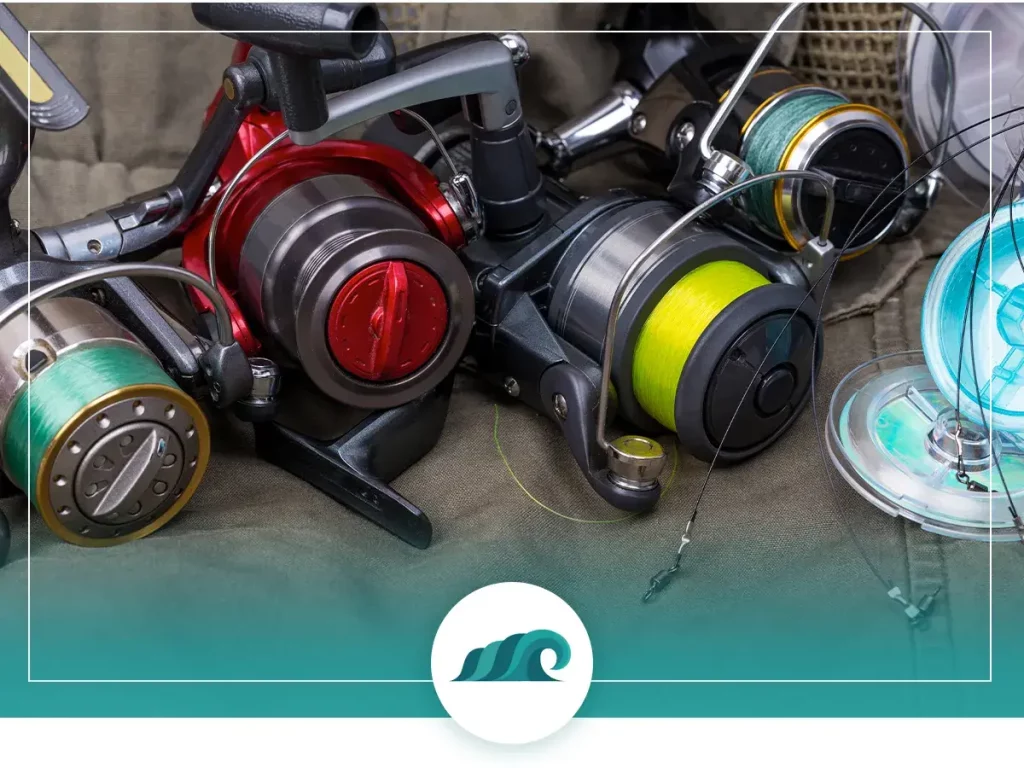
Line strength is measured in pounds (lbs.) test. Pound test refers to the number of pounds of pressure your line can hold before it breaks. This is also called the breaking strength of the line.
So, for example, 20 lbs. test line will handle up to 20 lbs. of pressure before it breaks. Keep in mind that 20 lbs. line can often handle significantly more than the stated weight, but due to high manufacturer standards the vast majority will not break at less than the stated number.
The general rule of thumb is to select a line with the lightest pound test necessary for the situation. This will make fishing more fun and challenging and will provide you with the sensitivity needed to really feel the fight.
Other factors that influence line strength are wet vs. dry strength, abrasive environments, and its knot strength. Let’s take a look at these in greater detail.
Wet. Vs. Dry Line Strength
Some fishing line, monofilament, in particular, will exhibit a difference between its strength when it’s when and when it’s dry. This line will actually absorb water when submerged for an extended period of time, which causes the line to become weaker.
Mono line can be up to 30% weaker when wet vs. dry, so the relevant number for mono is its wet breaking strength.
Braid and flouro lines don’t change in strength when they’re wet, so this number is only relevant for mono line.
Abrasion Resistance
While it might not be the first thing you think of when considering line test, a lines’ abrasion resistance ability can be an important factor. This is especially true when you’re fishing in areas with plenty of cover, rocks, and vegetation.
Certain line will weaken when used in these conditions, which can lead to fraying and breakage over time. Mono tends to be the most prone to damage from abrasion, followed by braid and then fluorocarbon.
Knot Strength
Knot strength refers to the strength of the line when tied in a knot. While line strength refers to the strength of the line on its own, it doesn’t take into consideration that line loses strength at the knot.
Line can lose up to a 1/3 of its strength when tied in certain knots, so it’s important to keep this in mind when choosing line strength. Equally important is selecting the right fishing knot for the job – as they actually vary significantly in terms of strength.
Shock Resistance
A line’s shock or impact strength refers to how well it can withstand being struck at high speed. This can come into play when you’re trolling and a fish strikes your bait at full speed – creating a sudden impact. Interestingly, basic mono line tends to perform best in this category, as its inherent stretch lowers the odds of a sudden breakage.
Line Type
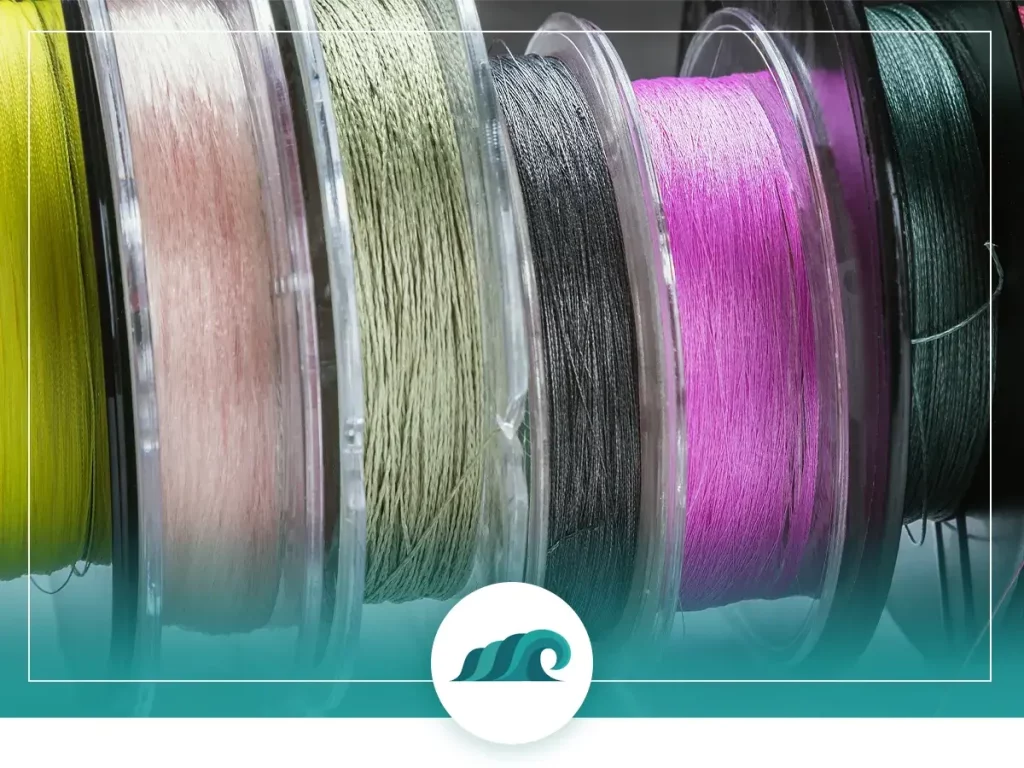
Line type is just as important as what pound fishing line to use. We won’t get too far in the weeds here, but a basic breakdown should assist you in picking the right line.
Monofilament: Mono is the cheapest and most basic line there is. It’s very flexible and great for beginners, and acts sort of like it has a built-in shock absorber. On the other hand, it’s not very abrasion resistant, it has a thicker diameter to braid, and is generally easier for fish to spot underwater.
Braid: Braided line – or braid – is tough, abrasion-resistant, low-diameter line with minimal to no stretch. This lack of stretch makes a great choice for many fishing applications, but not for all. Braid is more expensive than mono, is more difficult to tie in knots, and is generally visible to fish in the water.
Fluorocarbon: Lastly, fluorocarbon line is nearly invisible line with high abrasion resistance. It’s often used as a leader attached to the end of your main line, but can also be used as a main line on its own. Like braid, it has low stretch, and it can be significantly more costly than other types.
Line Strength Selection Explained
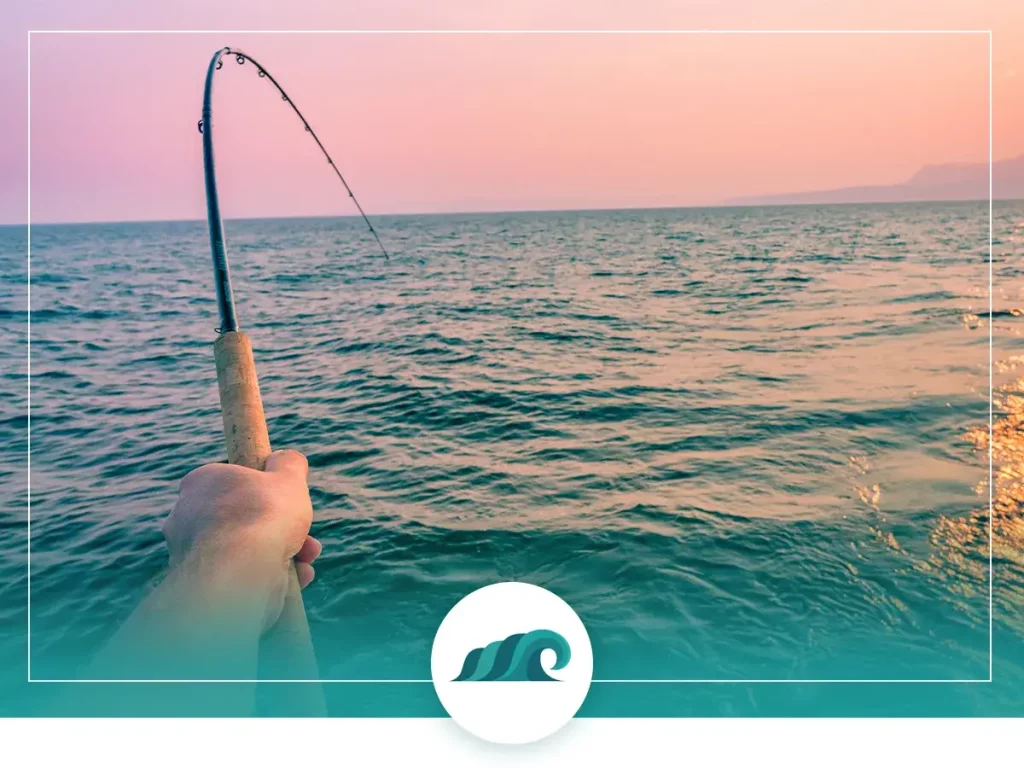
Ok, now that you have a pretty good idea of the factors influencing fishing line strength, how do you decide what pound fishing line to use?
Let’s say your trout fishing for Brook trout in medium-sized streams. These fish are typically 1 to 3 lbs, so taking into account the reduced knot strength; you’d want to go with a 2 to 4-pound test line.
Below are some common line strengths and their typical uses:
| Pound Test | Line Type | Species |
| 2 to 4 lbs. | Mono, Fluoro | Trout, Panfish |
| 6 to 10 lbs. | Mono, Braid | Bass, Walleye, Catfish, Salmon |
| 12 to 20 lbs. | Mono, Braid | Pike, Salmon, Snapper, Kingfish |
| 30+ lbs. | Braid | Tuna, Billfish, Shark |
Other Considerations
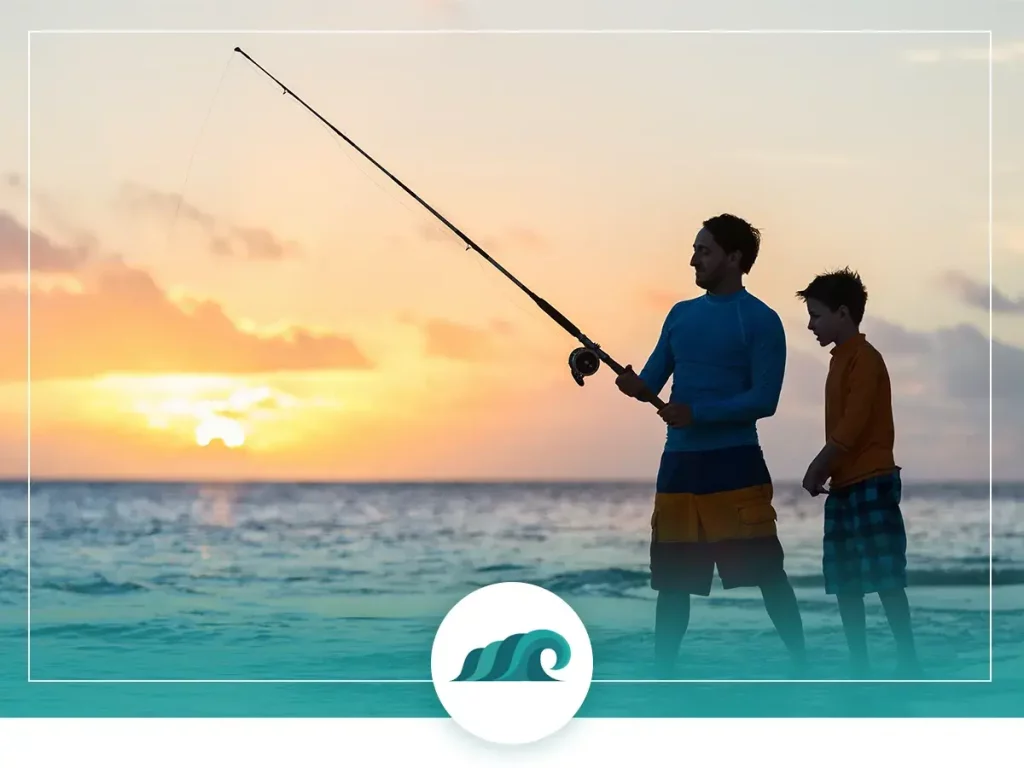
A line’s strength is only one of many characteristics that should be considered. Matching the right line to the fishing situation requires a combination of technical and subjective knowledge.
Castability
Castability refers to a fishing line’s ease of casting and handling. Line with good castability will come off the spool smoothly and easily, enabling more accurate and longer range casting.
Both mono and braided line have good castability, with mono being easier to handle and use, while braid is superior for long-distance casts.
Line Stretch
Line stretch simply refers to the amount of stretchiness inherent to the line. As mentioned previously, mono line is fairly stretchy, while braid and fluoro possess little to no stretch.
For most fishing, a line with little to no stretch increases sensitivity and hook setting ability. However, stretchy mono line can also be useful – particularly for beginners – as it acts like a shock absorber when a fish strikes your bait.
Line Memory
Line memory refers to fishing line’s tendency to retain the same shape that it’s stored as. Memory is a negative characteristic, so a line with as little memory as possible is preferred.
If your line has high memory – and you leave it spooled on your reel for a long period of time – then it will come off the reel with twists and tangles in it. This can impede smooth casting, and even cause birds nests to form.

